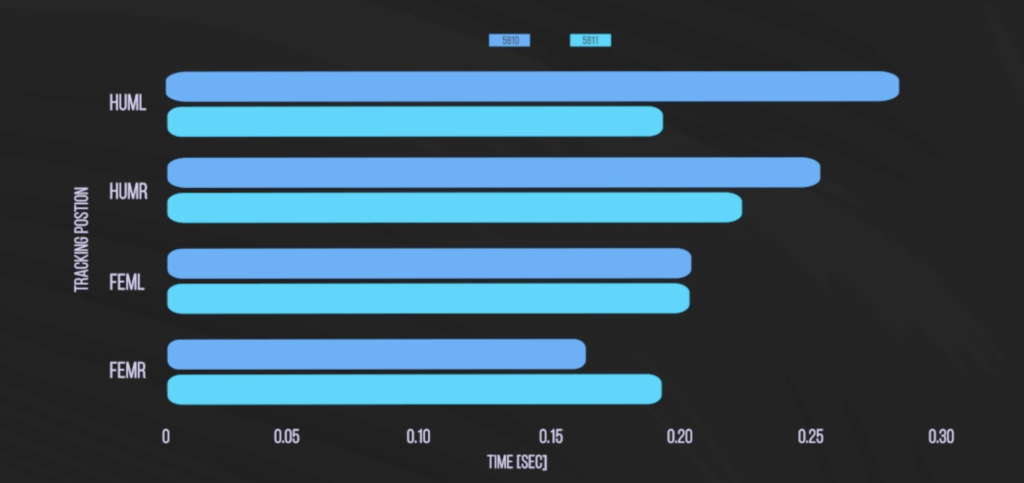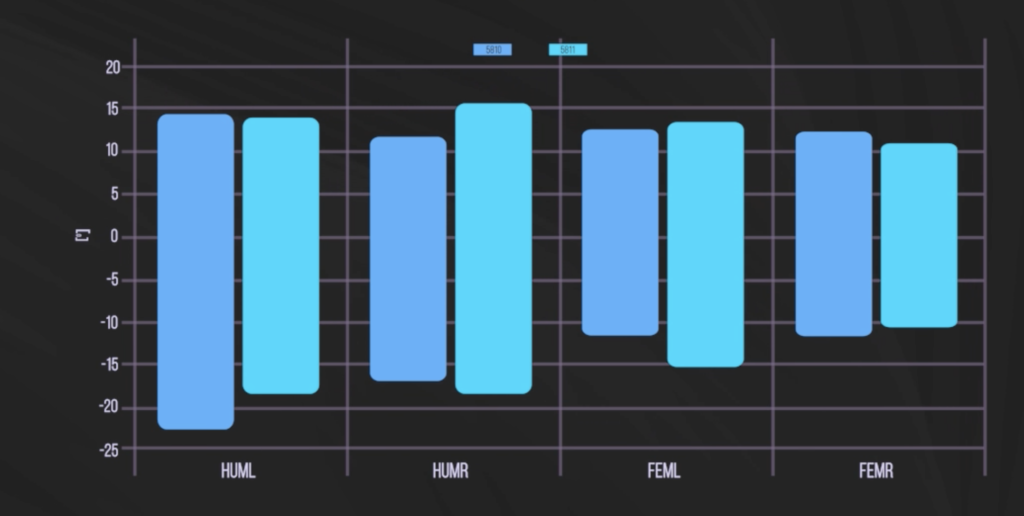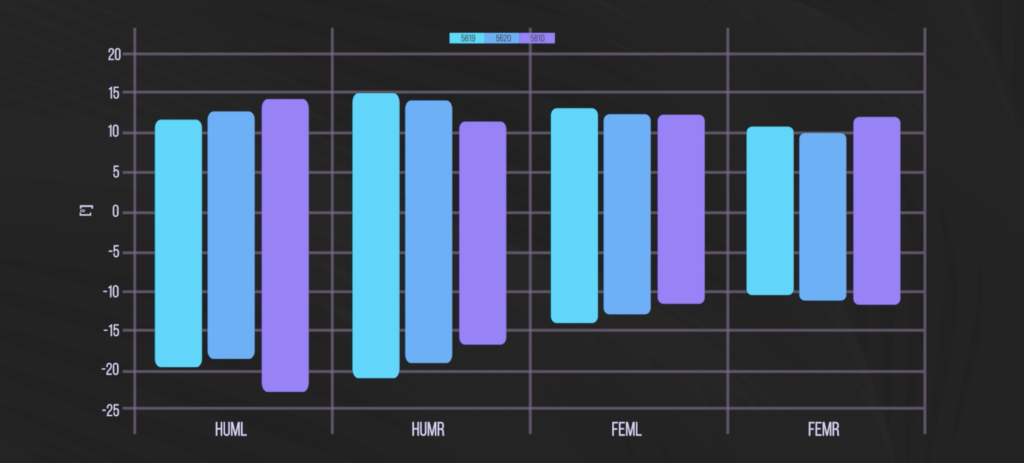Initial situation
Camila, Australian Sheperd, 10 weeks old, has a left front limp.
Camila fell several times from an elevation; the first limp normalised after 2 hours, but after the second fall the irregular gait persisted.
Therefore the owner came to see us the following day.


Examination
The puppy walks relatively tight in the forehand. Especially the left shoulder joint is turned into an inside position, which causes a toe tight gait. Also the limb axis is oblique. At the top it is slightly turned outwards, at the bottom it is turned inwards.
The space grip of the left shoulder limb is reduced, as also visible on the movement guided from the side. The movement of the left shoulder limb appears broken, the hovering phase is shortened.
Camila walks with the hindquarters out to the left, which reinforces the lameness and limping on the left front.
As no structural changes to the bones were apparent, a radiological study of the left shoulder limb mass was not performed.

Kinematic study
We used the measuring jacket and our gait analysis system to check the treatment and quantified values. You can see the findings in the following graphs.
Light blue are the findings before the orthopaedic biomechanical kinematic controlled manual treatment, dark blue those afterwards.
It is noticeable that especially the stance phase as well as extension and flexion have improved significantly. Also the gyroscope values; the angular accelerations of the limb have changed. After the orthopaedic treatment, the findings are symmetrical. In concrete terms, this means that Camila can put relatively normal weight on the left shoulder limb again.


The orthopaedic biomechanical manual treatment regulates the statics and dynamics of the limbs and the spine. The goal is the physiological (normal) function of the joints as well as goal-directed movement.
Furthermore, this movement should be possible without inflammation or pain. A limp in a dog is always an indication that the movement is not normal; due to faulty mechanics or inflammation and pain.
In Camila’s case, we set up a movement plan for 14 days following the treatment and then checked her values again (purple).
The video sequence shows a smooth, round movement. Both the shoulder and pelvic limbs moved actively and expansively, the position of the left shoulder limb mass was practically normal. The only noticeable thing was that in the sitting position, the left shoulder limb mass was placed slightly forward.
Our new kinematic measurement (violet) showed an altered extension and flexion. It has to be taken into account that the puppy grows daily, so a slight discrepancy in the values of individual features is to be expected.


In conclusion
Unfortunately, it happens very often that a puppy falls off sofas, boxes or small walls. The coordination is still lacking in the young dog, the stability and strength of the pelvic limb and the musculature is not yet developed.
If these cases are not orthopaedically biomechanically examined and treated, this can have major consequences, especially in the hip area.
But shoulder pathologies and lameness are also common; they can even often persist despite treatment. The reason is the altered biomechanics of the shoulder – the range of freedom. This must also be put in the context of OCD – Osteochondrosis.
We will dedicate a separate webinar to this topic: Prevention with the LupoMove® programme focusing on shoulder and hip disorders in puppies and young dogs. For more information on cartilage regeneration, recommend our book “LupoMove® sports, works and family” for a detailed explanation.
Watch Camila’s case also as a video:
